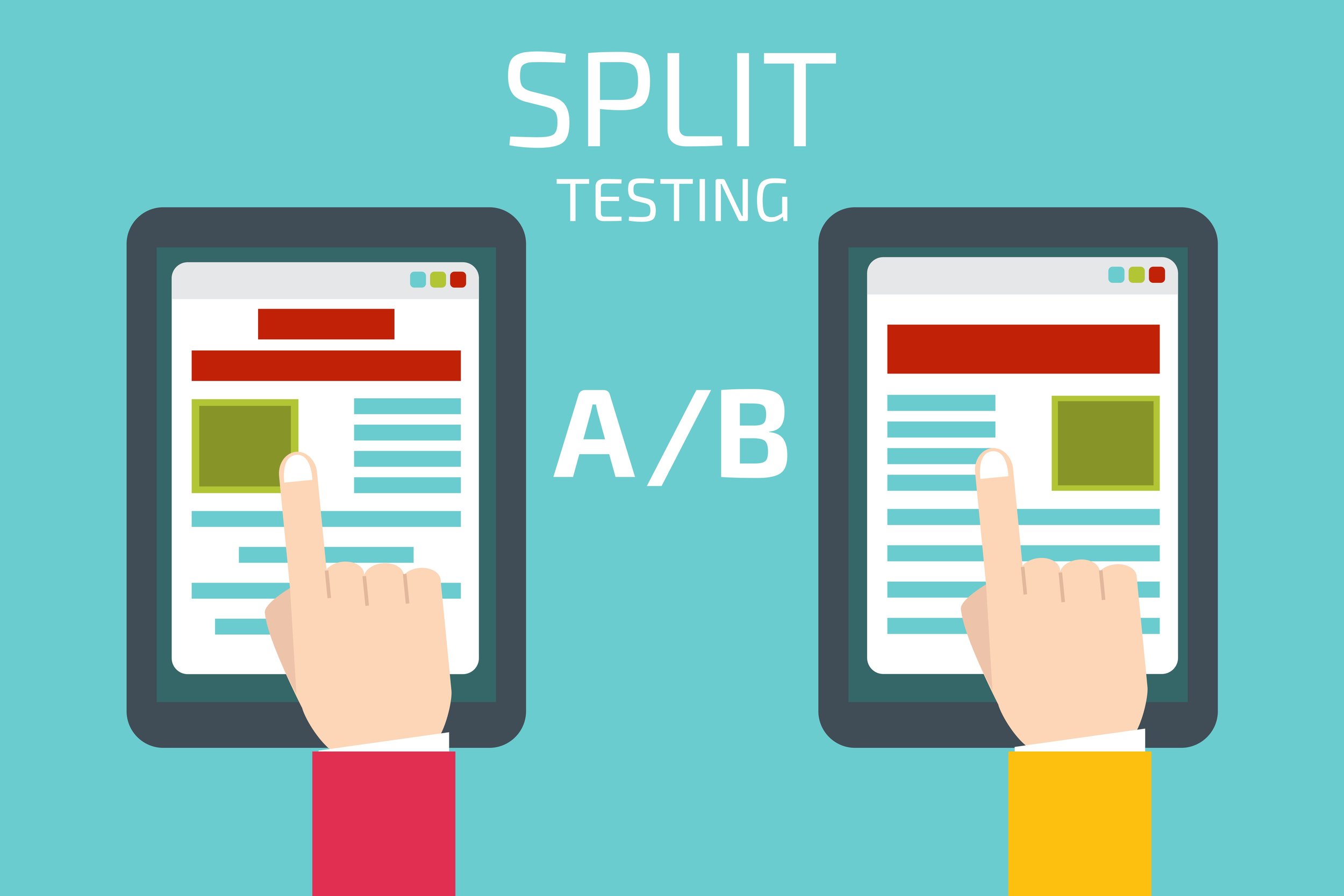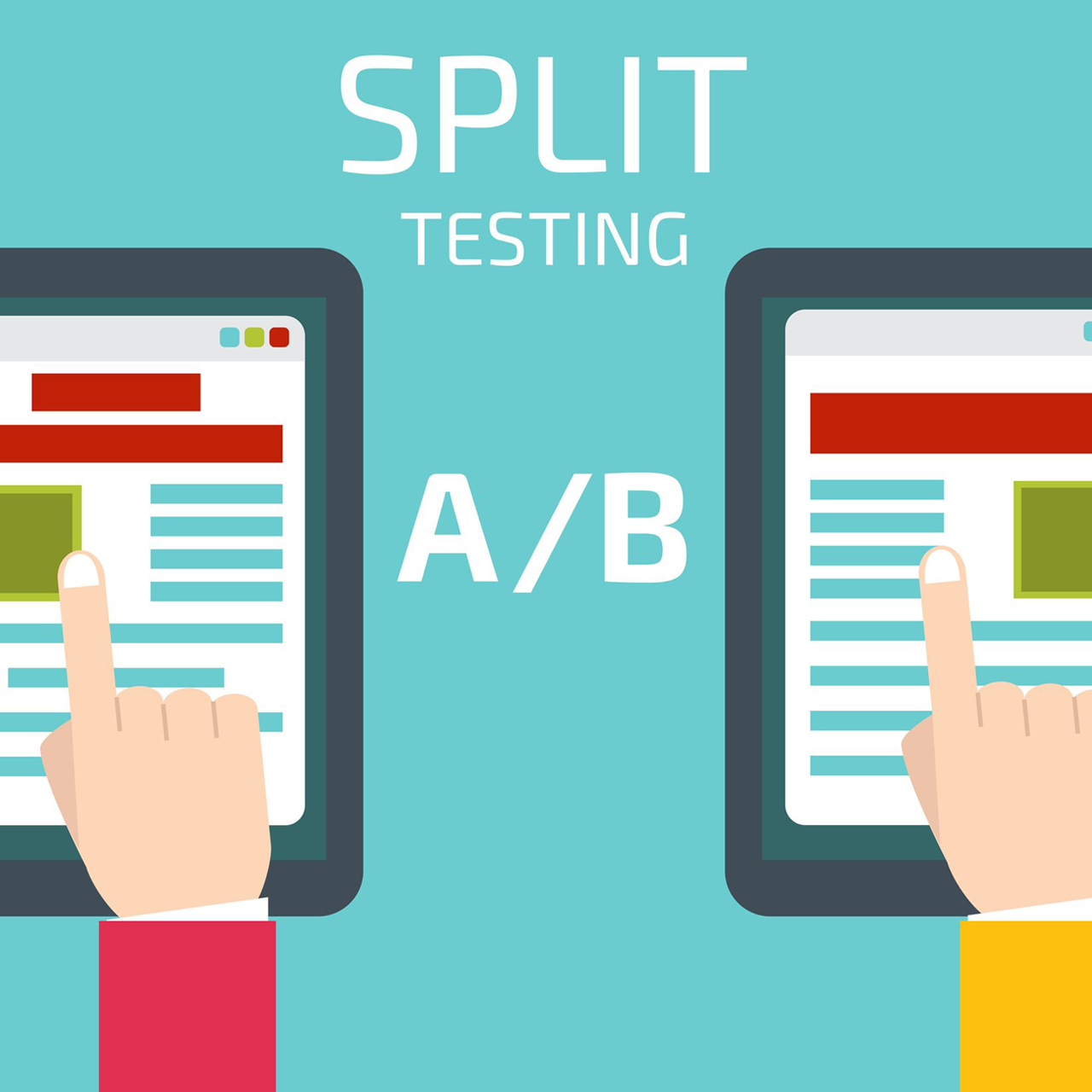One of the core elements of marketing is the split test. You hear people talk about how you need to test and measure a campaign, but how exactly do you do that?

That’s where the split test comes in. The Split Test is essentially comparing version A with version B – this can be two variations of ad copy, two different graphics, two different landing pages. You can split-test on many different platforms, on your website, in a Facebook ad, an email, or on a letterbox drop.
We are going to cover split testing in Facebook Ads, as it’s one of the most complicated – but the philosophy can be applied to any marketing medium.
The trick is to ensure that you only change one small element at a time. A different color, a different word – the change needs to be trackable. For example, if you were testing two different ad graphics, and for version B, you used a different background image, changed the color of the text, and changed the call to action. If it starts to outperform version A – you’ll never know which factor contributed to the success of the campaign, and you will struggle to replicate it.
So what can you Split Test?
- A headline
- The call to action
- A color (whether the color of the text, a button, a border, or another highlight element)
- An image
- You can even split test your audience
I often run A/B/C/D split tests so will compare 4 different variations to see which performs the best. What you want to do is run them all, and wait a couple of days till they have enough data and turn off the ones that aren’t working, and perhaps create a couple of new ones based on what was working.
There are many more scientific and data-driven ways to do this, but the simple test in which one performed the best and will help you achieve your goals faster. Take note of which outperformed the other, and write down why you think that happened.
Subscribe to
Bright Red Marketing!
Want digital marketing tips, strategies and updates delivered straight to your inbox?
Subscribe to Bright Red Marketing.
Then the next time you go to make an ad, you can re-test that assumption and split test based on a new theory, and this way you can guarantee your ads will always be improving.
When it comes to your Facebook campaigns, I highly recommend split testing your audiences first. Why? They have the greatest impact. If you’re reaching the wrong people a slight increase in conversions from a different colored button isn’t going to matter much.
When split testing audiences and your target, make sure that each group is as specific as possible. Test specific ages against each other, different genders, whether someone used a mobile or desktop device, or really narrow down your audience and test two competitors or interests against each other (see the targeting post for more ideas on how to define your audience).
You can do this as many times as you like. I usually create between 4-6 ad sets (a new targeting option requires a new ad set) at $5 a day. The key here is to test them for 24-48 hours, and then turn off the least successful ones and go from there. This way you can determine exactly which audience is going to respond to your ad.
When you are split testing in Facebook, it’s important that you name every element properly. Call each ad set by the distinguishing factor (what interests did you select to test) and then name its ads with the same ad set.
I often will split test audiences (ad set level) and image vs. video (ad level) at the same time.
So I’ll have an ad set called “Mum – Lorna Jane” and then two ads under that ad set one called Mum – Lorna Jane – Video and Mum – Lorna Jane – Picture. I do this, because video often outperforms static images, but not always, so I always test it when starting a new campaign. And you should too.
The more you split test, the easier it gets to understand. Start small, start with an A/B split test (comparing version A with version B), and then you can advance to an A/B/C/D/E/F test.
Just change one small thing each time, keep records of what worked and didn’t and keep testing. You’ll never stop!
Still, confused? Not sure how this applies to your business? Book in for a Free Facebook Review session and we can run through one of your campaigns and I’ll show you how it can work for you.




